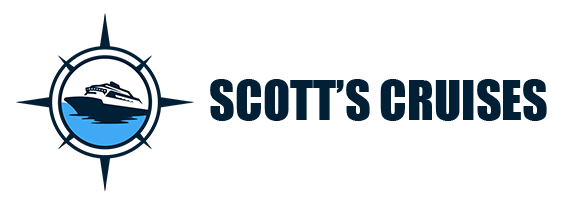Cruise lines operate in dynamic environments, with weather being one of the most significant factors impacting their schedules. When hurricane season rolls in, typically between June and November, cruise lines must have robust systems and strategies in place to ensure passenger safety and minimize disruption. Preparing for hurricanes is a complex process involving real-time monitoring, quick decision-making, and close coordination between various teams. Here’s a closer look at how cruise lines prepare for hurricanes and the steps they take when a storm threatens their routes.
Round-the-Clock Monitoring and Dedicated Operations Centers
Most major cruise lines have operations centers or command hubs that function around the clock. These centers are equipped with state-of-the-art technology that allows them to monitor weather patterns in real-time. Dedicated teams, often including meteorologists, track the development of storms and provide continuous updates on the conditions at sea and in port areas.
Meteorologists play a critical role by analyzing weather data and projecting the potential paths of hurricanes. This information is fed to senior leadership, captains, and operations teams who rely on it to make informed decisions about itinerary adjustments.
Royal Caribbean, Carnival, and Norwegian Cruise Line, for example, all have dedicated teams and operations centers that manage the logistical response to weather events. The meteorologists in these centers are not only trained to analyze weather but also understand how to balance the safety of the ship with the convenience of the passengers.

Itinerary Changes and Preemptive Adjustments
When a storm appears to be heading toward a cruise’s planned route, the decision to alter the itinerary begins. Cruise lines typically make itinerary changes early enough to avoid putting the ship in a dangerous situation while also minimizing the impact on guests.
Itinerary changes could include:
- Route Diversions: Ships may reroute entirely, heading to ports that are out of the storm’s projected path.
- Port Cancellations: If the weather forecast indicates that a particular port will be affected by the hurricane, the cruise line may choose to skip that port.
- Extended Days at Sea: In some cases, to avoid a storm, a cruise may spend additional time at sea where conditions are safer rather than stopping at a port.
Cruise lines coordinate with port authorities and local governments to determine if conditions will be safe for docking and disembarking passengers. They also rely heavily on forecasts from organizations such as the National Hurricane Center (NHC) in the U.S. to inform these decisions.
Decision-Making Process
The decision-making process involves close coordination between various departments, including the captain of the ship, the operations center, and executives. Captains have real-time access to weather data on the bridge and are in constant communication with the home office.
When the weather becomes a concern, the operations center works with the captain and meteorologists to determine the best course of action. The safety of passengers and crew is always the top priority, so even though changing a cruise’s itinerary can be disruptive, these decisions are based on data-driven assessments of risk. Cruise lines weigh multiple factors:
- The projected path and severity of the hurricane.
- The timing and potential landfall of the storm.
- The readiness of alternate ports to accept the ship.
- The ship’s current location and where it can navigate safely.
Cruise lines typically inform passengers of any changes as soon as decisions are made, ensuring there is enough time for people to adjust plans if needed. In some cases, cruises may be shortened, extended, or even canceled entirely if the storm’s severity warrants it.
Onboard Preparations During Hurricanes
If a cruise ship finds itself close to a hurricane, onboard preparations ramp up. The ship’s crew is well-trained to handle emergency situations, including adverse weather conditions. These onboard preparations might include:
- Stabilization Efforts: Modern ships are equipped with stabilizers that help minimize the effects of rough seas. Stabilizers help keep the ship steady and improve the comfort of passengers.
- Safety Drills and Briefings: In the event of an approaching hurricane, the crew might conduct additional safety briefings or drills to ensure passengers are prepared.
- Communications and Transparency: Clear communication is key, so passengers are kept informed of the ship’s status and the next steps. Cruise lines often send out frequent updates to reassure guests and provide instructions.
- Securing the Ship: Crew members work to secure loose items both indoors and outdoors to prevent injuries caused by shifting objects in turbulent conditions.
After the Storm: Recovery and Resuming Operations
Once the storm passes, cruise lines enter a recovery phase. For ships already at sea, this often means reassessing their position and resuming normal operations, either by returning to their original route or continuing to avoid affected areas. For ports that were impacted by the storm, there may be significant delays before cruise ships can dock again. Ports need to assess any potential damage and ensure that infrastructure is safe and operational.
Cruise lines also coordinate with local governments and relief organizations to provide aid if a destination has been hard-hit by the storm. Ships have occasionally been used to deliver emergency supplies, medical assistance, or transportation for those affected by hurricanes.
Guest Compensation and Adjustments
When a cruise is disrupted due to a hurricane, passengers are typically offered compensation in the form of onboard credits, refunds, or future cruise credits. Each cruise line has its own policy, but they aim to maintain guest satisfaction as much as possible despite uncontrollable weather events.
While hurricanes pose a significant challenge for the cruise industry, the advanced preparedness measures taken by cruise lines help ensure passenger safety and mitigate the impact of storms. Through a combination of meteorological expertise, continuous monitoring, coordinated decision-making, and onboard readiness, cruise lines have developed effective strategies for navigating through hurricane season. Even though itinerary changes may be inconvenient, the safety of passengers and crew remains the top priority for every cruise line sailing through storm-prone regions.
